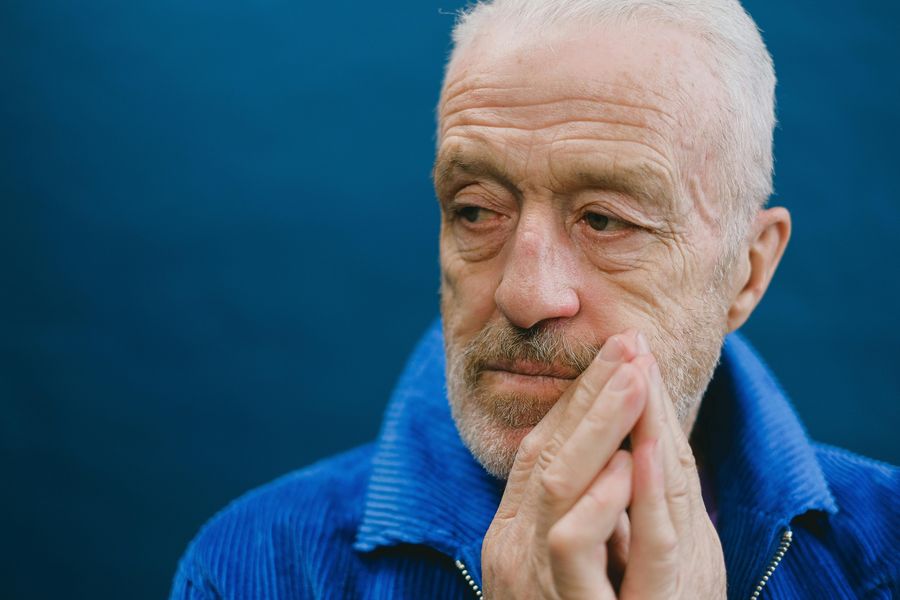Understanding Disorganized Attachment in Relationships
Do you ever feel like you’re constantly in a painful internal struggle, unable to decide whether you want to be close to someone or push them away? This constant dilemma can be a result of a disorganized attachment style.
What is Disorganized Attachment Style?
Attachment styles refer to the way we form and maintain relationships with others. There are four primary attachment styles: anxious, avoidant, disorganized, and fearful-avoidant.
Disorganized attachment, also known as fearful-disorganized attachment, is often considered the most complex and painful of these styles. A person with disorganized attachment may swing between mood extremes, leading to a push and pull dynamic in their relationships.
They may feel cynical and unenthusiastic about their partner one moment, then overly affectionate the next. This inconsistent behavior can leave partners feeling confused and hurt.
Types of Insecure Attachments
Disorganized attachment is just one type of insecure attachment.
- Anxious attachment is characterized by a fear of abandonment and a strong need for reassurance from their partner.
- Avoidant attachment is characterized by a lack of emotional attachment and a desire for independence.
- Fearful-avoidant attachment is a combination of both anxious and avoidant styles.
Signs of Disorganized Attachment
Some signs of disorganized attachment are:
- An inability to regulate emotions
- Deep-seated fear
- Low self-worth
- Aggressive behavior
- Depression
Those with disorganized attachment may have a disassociated and fragmented sense of self, lacking coherence, and constantly vigilant.
Causes of Disorganized Attachment
Disorganized attachment is often the result of childhood trauma. Children who witness abuse or are in dysfunctional families may develop disorganized attachment as a way to cope with unpredictable and inconsistent relationships.
Inconsistent relationships with caregivers also play a significant role in the formation of disorganized attachment.
The Impact of Disorganized Attachment on Relationships
It’s no surprise that disorganized attachment can have a severe impact on one’s relationships with others. Understanding how disorganized attachment manifests in relationships can help individuals work towards building healthier and happier relationships.
Push and Pull Dynamic
As already mentioned, the push and pull dynamic is a common phenomenon in relationships with someone who has disorganized attachment. Their inconsistent behavior can genuinely confuse and hurt their partners, especially if they don’t know about the attachment style.
At times, they may feign interest or affection, then suddenly withdraw without any reason, leaving their partner feeling emotionally stranded.
Trust Issues
Disorganized attachment can result in severe trust issues. These individuals have difficulty establishing trust because they genuinely fear intimacy.
They can become insecure and suspicious of partners, even when there is no real cause for concern. The resulting mistrust can affect multiple aspects of the relationship and make it challenging to develop a strong bond.
Relationship Hopper
People with disorganized attachment have a hard time staying committed to one person. They may jump from one relationship to another, seemingly without concrete reasons for breakups.
This occurs because they don’t feel secure and can never be sure that they won’t get hurt. They move on to new relationships hoping to find security, but the pattern continues.
Inability to Process Emotions
Disorganized attachment can lead to an absence of coherence and a fragmented sense of self. As a result, the individual may have difficulty processing their emotions consistently.
They may have a hard time regulating their emotions, leading to outbursts of anger or depression. This inconsistency can negatively impact their relationships with others.
Self-Sabotaging Nature
Lastly, individuals with disorganized attachment tend to be highly self-sabotaging. They end relationships before they should, imagining hypothetical situations that could hurt or abandon them.
This sabotage is often a result of fear of being hurt or abandoned, leading to a pattern of destroying relationships before they can reach full potential.
Conclusion
In conclusion, disorganized attachment can have a significant impact on relationships, leaving individuals feeling lost, confused, and insecure. Understanding its effects can be a useful tool in building healthier and more secure relationships.
It’s essential to find ways to treat disorganized attachment’s root causes and develop healthy emotional regulation skills to lead a satisfying life. If you’re struggling with disorganized attachment, seeking help from a professional therapist could be the first step to improving your relationships’ quality.
Coping with Disorganized Attachment in Relationships
Dealing with disorganized attachment can be challenging, but there are ways to cope and mitigate its effects on relationships. If you or your partner has this attachment style, there are steps you can take to alleviate the pain and suffering that often comes with it.
Working with a Therapist
One of the most effective ways to cope with disorganized attachment is to work with a therapist. Therapy can help to change harmful behavior patterns and work towards healing childhood trauma.
A professional therapist can help you identify the root causes of the attachment style, challenge negative thoughts, and learn healthy emotional regulation skills. Through therapy, you can learn strategies to cope with the pain and anxiety that often accompany disorganized attachment.
You can learn techniques for emotional regulation, communication, and handling trust issues. Therapy can also help you understand your attachment style, so you can begin to rebuild and strengthen your relationships with others.
Supporting a Partner with Disorganized Attachment Style
Being in a relationship with someone with disorganized attachment can be challenging, tiring, and difficult. Supporting your partner through healing from the effects of their childhood trauma will require patience and care.
Here are some ways to support a partner with this attachment style:
- Understanding the Root Cause: Often, disorganized attachment style stems from childhood traumas and experiences. Understanding and acknowledging the root cause is key to supporting your partner through it.
- Not Internalizing Actions: It is essential not to take your partner’s actions too personally. Their behavior is more likely driven by their attachment style than hurtful intentions.
- Challenging Automatic Thoughts: Negative automatic thoughts may develop due to disorganized attachment. Challenging and changing these thoughts can be crucial in supporting your partner through their emotional difficulties.
Prevention of Disorganized Attachment Style
Preventing disorganized attachment can be tricky, as it often stems from childhood trauma and experiences. However, creating a caring and attentive family can prevent the development of disorganized attachment later in life.
Trustworthy and reliable adults can also help prevent disorganized attachment in children. Open communication and healthy emotional regulation are key towards developing secure attachment styles.
Choosing Healthy Relationships
Choosing healthy relationships can prevent the development of disorganized attachment. It’s crucial to choose kind, warm, and reassuring people who put effort into the relationship.
Avoiding emotionally unavailable people can also be helpful in preventing disorganized attachment. Seeking professional help early on in relationships can help in mitigating certain unhealthy patterns.
It’s important to keep in mind that healing from disorganized attachment is a journey. It takes time, commitment, and patience to work through the underlying issues and rebuild relationships.
But with professional help, support from loved ones, and a willingness to change, coping with disorganized attachment is certainly achievable. In conclusion, understanding disorganized attachment, its impact on relationships, and coping strategies is essential for building and maintaining healthy relationships.
Disorganized attachment stems from childhood trauma, and working with a therapist can be a powerful way to address it. Supporting your partner, preventing disorganized attachment, and choosing healthy relationships are some strategies that can help alleviate the effects of disorganized attachment in the long term.
Ultimately, recognizing disorganized attachment in yourself or others is the first step in creating healthier, happier, and more fulfilling relationships.



